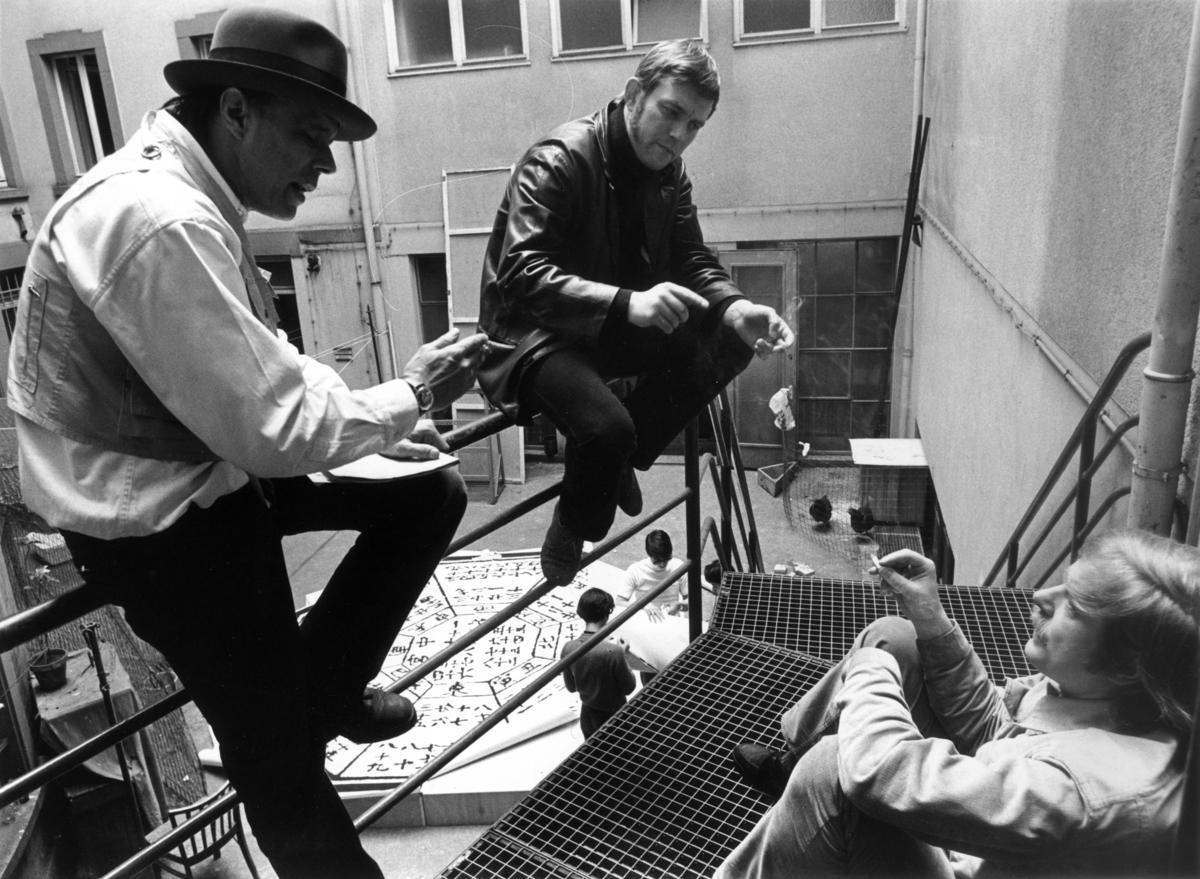Abstract
Joseph Beuys was a sculptor, performance artist, printmaker, and art teacher who first rose to fame in the 1960s for works that were shockingly innovative (or for some, just plain shocking). In general, Beuys was interested in exploring the relationship between creative acts and all aspects of life; it was his firm belief that everyone possessed genuine creative potential—a viewpoint that was not without larger political implications. His performance piece Titus Andronicus/Iphigenie premiered in May 1969 at “Experimenta 2,” which was organized by the German Academy of the Performing Arts in Frankfurt am Main. The photograph below, taken during a rehearsal break on May 1, 1969, shows Beuys and his two collaborators, Wolfgang Wiens and Claus Peymann (from left to right). As part of the piece, Beuys appeared on stage in a long fur coat, which he quickly shed to reveal the outfit he is wearing here. He shared the stage with a (real) white horse, who ate hay throughout the performance. (Beuys’s work in all media made near constant reference to animals.) For his part, Beuys paced back and forth on the stage, moved toward and away from a standing microphone, fed sugar cubes to the horse, and made a variety of physical gestures and gesticulations. As he did this Wiens and Peymann recited text montages from Shakespeare’s Titus Andronicus and Goethe’s Iphigenie over a loudspeaker. Photo by Abisag Tüllmann.
